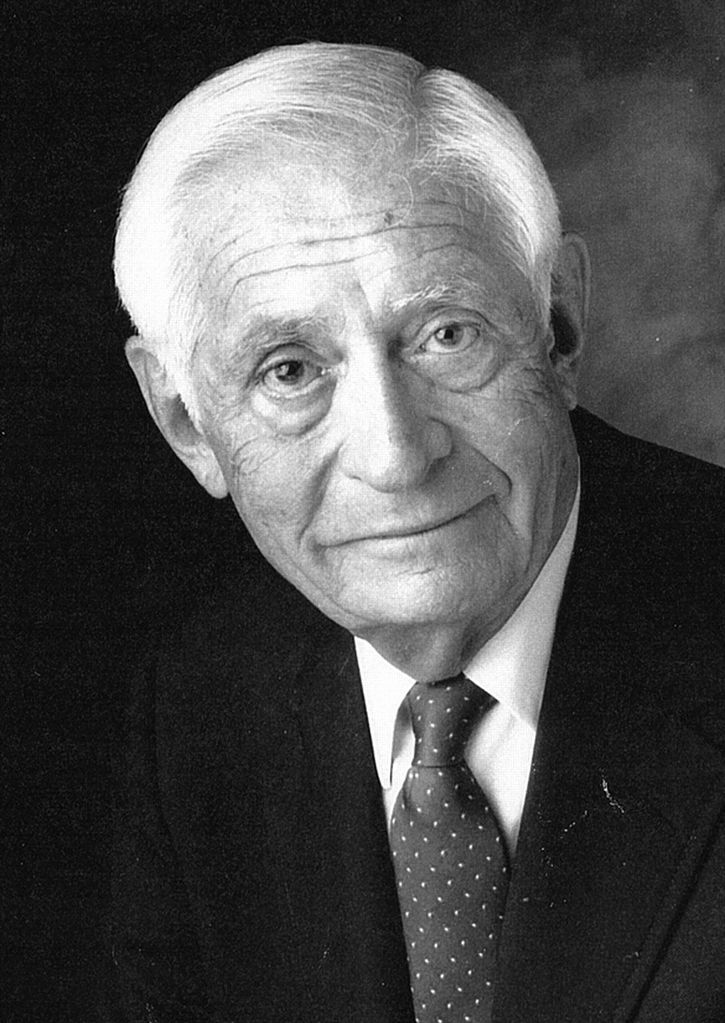Project Hedonia, Bob Heath, and #DeepState Experiments in Mass Mind Control – #Hollywood #CIA #CDAN #QAnon #GreatAwakening
from Neon Revolt:
 Before we get into the meat of the article, I have to give a couple of housekeeping updates, especially on one thing that’s really frustrating me of late.
Before we get into the meat of the article, I have to give a couple of housekeeping updates, especially on one thing that’s really frustrating me of late.
Firstly, my Twitter account got nuked by the powers that be.
I can’t do anything on Twitter now, so… stop trying to contact me through it and, you know, get on Gab already (like I’ve been saying for the past two years).
I always knew I was going to be banned again from Twitter. It wasn’t a question of “if.” It was only a question of “when.” But I’m positively baffled by the normies still trying to get my attention through a platform I can’t respond to them on, still.
But that’s not my big frustration. That’s with regards to #RevolutionQ and the way some backers are responding right now.
Look, I’m really grateful for each and every backer putting their faith in me, and entrusting me to deliver a quality product to their door. Really and truly. But I’m completely baffled at how some people don’t bother to look at the updates I’ve already provided – across multiple platforms (here, Indiegogo, Twitter, and Gab) – and then send me nasty messages about having not receiving a book yet.
Let me back up for a second and explain why I am both frustrated and baffled at this kind of response I’m getting from people.
Firstly, crowdfunding is different than regular purchases. When someone sets up a crowdfunding campaign, it’s understood that any timeframe given is an estimate, and that there will be challenges that will need to be overcome during the actual production campaign, which may delay the project.
In other words: nearly every crowdfunding campaign under the sun experiences delays. Revolution Q is not unique in this regard.
But what really baffles me here is that I’ve provided multiple updates on the Indiegogo page itself – complete with a final shipping timeline – and I did this weeks ago.
Not only that, but I know for a fact that these updates were emailed to each and every backer.
So if you backed the book, you got this timeline hand-delivered to you weeks ago.
In fact, here’s a list of all the updates, so you can see for yourself when I posted them, and when you received them:
What this tells me is that people are not bothering to read the updates.
Because if they had, they wouldn’t be sending me nasty messages about not receiving a book yet.
Because, once again, we’re in the middle of printing them right now, and they’re going to start shipping on the 25th of September, with all books being sent out by October 1st.
00:00
00:31
(This isn’t the first time I’m posting this clip. But again, a good number of you haven’t seen this, so I’m reposting to show you – yes, this really is happening, as we speak).
Heck, I even had one woman tell her credit card company that the order was fraud against her card in order to issue a chargeback against me, and demanded I send a book to her, at which point she would tell her bank “Oh yeah, sorry, this wasn’t actually fraud. Go ahead and pay this bill.”
I canceled her order outright. I’m not going to be held hostage and given promises of payment at some later date. Sorry, but some people really have no idea the amount of work and money it takes to create a project like this. And the saddest part of all is she could have avoided making such a boneheaded mistake if she had only bothered to read the updates – which were also emailed directly to the email address she was using to contact me.
Now I realize this delivery date is a bit beyond the original August projection, but again – I’m a one-man show here. I’m not working with a traditional publisher. I’m making this happen all by myself. It didn’t help that Indiegogo held the crowdfunding money in limbo for THREE weeks instead of just one. But as I said in the updates, I also used the time to:
- Hire a copy editor
- Hire a graphic designer to upscale the images, and
- Increase the paper quality to a great 70 lb paper, which will both look better and last longer
So you’re getting a higher quality end product, on top of getting it before literally anyone else in the world.
Now, if you’re still sending me nasty messages after this update, here on my own site, I literally don’t know what to tell you. I’ve done everything I can to communicate where the project is at, and what’s happening with it, but I need you guys to pay attention when I post an update, so I don’t have hordes of angry messages being sent my way.
And just to be clear here: read me very carefully. All books will be SENT by October 1st. They start going out on the 25th, and all will be shipped by the 1st.
It doesn’t mean you’ll have them in your hands by October 1st (especially if you were one of those sneaky international orders who managed to work your way in there, despite my best efforts to limit this to US only). When you get them is largely variable on how fast the mail system gets those books out to you. Expect standard Ground shipping times. Some of you will get them within days of the 25th. Some of you will have to wait a bit longer. I wish I could teleport them right into you lap, I swear, but this is the reality of the mail system in the US.
So please – when I post an update about the project, read it before sending me a nasty message. And try to remember how long I’ve worked on this, and how much content I’ve already given you throughout these past few years.
I appreciate the trust you guys have given me and want to do right by you. I’ve tried to keep everyone in the loop, but you’ve gotta pay attention when I post an update!
Lastly – I realize #NeonNotables kind of went poof but that’s because I got absolutely walloped by an autoimmune Epstein-Barr flare up. I’ve talked about in the past how this kind of thing happens periodically with me, and all I can really do to fight it is rest until I’m recovered. It’s not fun, believe me, and I wish I could produce fresh content every single day, but again, I’m just one guy. And on top of running the Gab forum, and on top of some logistical things happening in the background which I’m not ready to announce just yet… there’s just been a lot going on.
I know I do a lot, and it seems like I’ve got this gigantic operation going, but I really am just one guy who – honestly – just tries to work hard and iterate and improve every day. And that will continue.
But I thank you all for your patience and understanding in all of this. Truly.
And with that, we now move on to the article:
The famous horror and suspense director, Alfred Hitchcock once said:
“The audience is like a giant organ that you and I are playing. At one moment we play this note on them and get this reaction, and then we plat that chord and they react that way. And someday we won’t even have to make a movie- they’ll be electrodes implanted in their brains, and we’ll just press different buttons and they’ll go ‘ooooh’ and ‘aaaah’ and we’ll frighten them…Won’t that be wonderful?”
After researching this subject I think I can say with some confidence that perhaps Alfred knew quite a bit more than he was letting on at the time. I say this because #CDAN published an absolute mind-blowing Blind Item today, which lead me down a massive rabbit hole few can rightly comprehend. But to even attempt to fully understand it, you really need to first read my previous article on the subject, because without it, you won’t have the points of reference to fully understand everything we’re going to talk about in this article:
So, my longtime readers will know that I’m a huge fan of #CDAN and the rare “conspiratorial” drops he releases, pulling back the curtain just that much more on the global elites. …
 NEON REVOLT
NEON REVOLTBut the quick, 40,000 foot summary of that article is:
There was a Rothschild-backed Honeypot in New Orleans that specialized in entrapping Hollywood celebs, which had ties to the Deep State and mind control experimentation. It was burned down, following wider knowledge of it spreading online, to hide its relation to many crimes.
So that’s the basic-basic-basic background. (Really, go read the first article if you haven’t already, and then come back to this).
Today, Enty drops a bomb on his website:
That’s a lot to take in, isn’t it?
You have a Monarch Mind Control programmer working in close proximity to to the House on St. Charles Street, looking for a way to perform Electrical Brain Stimulation (EBS), without invasive surgical procedures (which almost always utilized electrodes placed into different regions of the brain), and this technology being leveraged by Hollywood and the Deep State for mass programming.
So, first thing’s first: Who is the doctor in question here?
The most likely candidate is none other Robert Galbraith Heath:
So who was Dr. Heath?
The doctor is perhaps most notable for founding Tulane’s Department of Psychiatry and Neurology in 1949, where he would spend his entire career. He is notable for his research into EBS; really, a pioneer of the field (and I don’t say that as a form of flattery, because, as you’ll soon see, his experimentation had a rather amoral bend to it), working with the “biological model” of the brain, which roughly says that all mental illness is a result of physical disorders, or chemical imbalances, and thus, can be cured with physical treatments.
Indeed, Dr. Heath would be quoted in an interview with The Virginia Lighthouse as saying:
“With the use of chemical brain-control agents it may be possible to control the individual and the masses and to do this unobtrusively and without the active cooperation of the victims — not a question for the future — it is here.”
AHRP has a stunning write up on his body of experimentation (of which the public is aware):
Dr. Robert Galbraith Heath was the chairman of the Dept. of Psychiatry and Neurology at Tulane University; his invasive surgical brain physiology experiments were at the outer limits of existing neurophysiological knowledge. He surgically implanted electrodes into is psychiatric patients’ brains to test the effects of electrical brain stimulation (EBS). The first 19 patients who were subjected to EBS were diagnosed with schizophrenia. The published reports clearly indicate that the surgical procedures used were unsafe: “four had seizures, six of the nineteen schizophrenia patients developed infections, three had other neurologic sequela, one had acute cardiac failure, and two died from causes related to intracerebral infections.” (Baumeister, 2000)
The CIA and military provided funding for the Tulane experiments; and in 1954, Heath was the principal speaker about electrical stimulation at Edgewood Arsenal. In 1956, he reported that he and his colleagues had discovered a protein they called taraxein in the blood of schizophrenic patients and that when injected into healthy “volunteers” caused symptoms of schizophrenia. His claim received wide public and professional attention. But for forty years no one has duplicated that finding. (Baumeister, Journal of the History of the Neurosciences, 2011)
By 1968, Heath’s team had implanted deep brain electrodes into 52 patients — 42 with schizophrenia, 6 with intractable pain, and 4 with epilepsy. An additional 5 patients underwent the surgical procedure; one developed infection, one had a seizure during stimulation, and one who had been diagnosed with melancholia died six weeks after surgery from brain trauma. Heath claimed these were “harmless.” The experiments were medical travesties. Nevertheless, Heath continued to conduct EBS experiments for 30 years, inflicting pain, brain damage and degrading the humanity of 100 victims whom he turned into living human pincushions. As many as 125 electrodes and small tubes were implanted into the each of these patients’ brains to arouse the emotional core of their subjects. Heath and his team injected a wide variety of drugs directly into the brain tissue including LSD and bulbocapnine. In large doses, bulbocapnine was known to produce “catatonia and stupor.” According to one memo, the CIA sought information as to whether the drug could cause “loss of speech, loss of sensitivity to pain, loss of memory, loss of will power and an increase in toxicity in persons with a weak type of central nervous system.”
The patients’ emotional reactions to EBS and the drugs were observed and documented on film using one-way mirrors. Heath used the films showing patients’ reactions to EBS to illustrate his marvelous advance in neuroscience: ‘His face twists suddenly into a terrible grimace. One eye turns out and his features contort as though in the spasm of a horrible science-fiction metamorphosis. ‘It’s knocking me out. . . I just want to claw. . . I’ll kill you. . . I’ll kill you, Dr. Lawrence.”
Heath justified these cruel and inhumane experiments as being “therapeutic” in nature. The researchers’ “near-evangelical” enthusiasm for their technique falls within psychiatry’s tradition of brutal brain damaging procedures that over the decades have been promoted as “cures” for schizophrenia — e.g., ice pick lobotomies, electroshock, insulin coma, and currently prescribed drug cocktails. Heath’s experiments included lurid electronic sexual stimulation and response. In “Electrical Self-stimulation of the Brain” he described some patients who would self-stimulate 1,000 orgasms an hour. He publicized his work both in the scientific and popular literature. His abominable human experiments were mostly lauded during the first twenty years. And he was elected President of the Society for Biological Psychiatry in 1969. Dr. Peter Breggin reports that in Heath’s presidential address, “Perspectives in Biological Psychiatry,” he attributes all significant advances in psychiatry to be biological, and asserts that so-called mental patients suffer from “inappropriate anxiety” whose “instantaneous” cure is by psychosurgical techniques. As for drug addiction, Heath attributes it to a “neurological defect in their pleasure centers” that can be cured with corrective surgery. (Breggin. Return of Lobotomy, 1982)
You’ll probably recall that this was happening at a time when the CIA was also experimenting with the same kind of tech in animals; the most famous example of which was recently declassified, showing that the CIA had successfully created six “remote controlled” dogs, by implanting a number of electrodes inside the brains of man’s best friend:
Dr. Heath was essentially doing the same kind of work, albeit on humans. He often recorded his work with his patients, and one such archive is presented, in part, in this video clip:
00:00
01:36
A previous Blind Item – also noted in the previous “House on St. Charles Street” article – further confirms Dr. Heath as the likely suspect:

In the original article, I explored the TulaneLink website, focusing on the names of the victims – eventually finding their Congressional testimonies – which you can find in the previous article.
But imagine my shock when the name of one of those victims (Claudia Mullen) cited Dr. Heath, as one of the Mind controllers, right at the top of yet another TulaneLink page:
What’s staggering to me about this is that this is an admission that Dr. Heath was working on Project Artichoke, which would later become what we now know as MK Ultra.
And it’s just out there, in the open.
But the site continues, detailing the many different… shall we say, “lines of inquiry,” taken up by Dr. Heath (at the behest of the CIA and the Deep State). These include not just insertion of electrodes into the brain, but chemical experimentation, with compounds like LSD, mescaline, and bulbocapnine:
The site also gives a bit of history of the CIA’s activities at Tulane, as well as the creation of the IDA (which hands out research grants to other top universities at the behest of the US Government).
It goes on to explain how the IDA is the sister-org of DARPA:
I’m sure there are more nuggets of info buried in the bowels of that Tulane Link site, but I think that’s enough for now, for our purposes. (Feel free to drop any other info you may find on the site in the comments below).
But perhaps most notably, Bob Heath is most remembered for his experiment where he claims to have successfully cured a homosexual man of, well, his homosexuality, by implanting a ton of electrodes, and then basically activating regions of the brain associated with pleasure and orgasm when in the presence of, at first, heterosexual pornography, before hiring a female prostitute to, well – you get the idea.
Heath considered experiment was a resounding success. This is an extended excerpt from an Ars Technica article about Heath, but worth reading in its entirety to get a better sense of what Heath was working on:
The year was 1970, and the man was a 24-year-old psychiatric patient. The woman, 21, was a prostitute from the French Quarter of New Orleans, hired by special permission of the attorney general of Louisiana. And they had just become part of one of the strangest experiments in scientific history: an attempt to use pleasure conditioning to turn a gay man straight.
The patient—codenamed B-19—was, according to the two academic papers that catalogued the course of the research, a “single, white male of unremarkable gestation and birth.” He came from a military family and had had an unhappy childhood. He had, the papers said, entered the military but had been expelled for “homosexual tendencies” within a month. He had a five-year history of homosexuality, and a three-year history of drug abuse: he had tried glues, paints, thinners, sedatives, marijuana, LSD, amphetamines, even nutmeg and vanilla extract. He had temporal lobe epilepsy. He was depressive, suicidal, insecure, procrastinating, self-pitying and narcissistic. “All of his relationships,” wrote his doctors, with an unsparing lack of sympathy, “have been characterised by coercion, manipulation and demand.”
In 1970, B-19 ended up in the care of Robert Galbraith Heath, chair of the department of psychiatry and neurology at Tulane University, New Orleans. Heath’s prescription was drastic. He and his team implanted stainless steel, Teflon-coated electrodes into nine separate regions of B-19’s brain, with wires leading back out of his skull. Once he had recovered from the operation, a control box was attached which enabled him, under his doctors’ supervision, to provide a one-second jolt to the brain area of his choice.
Before being given control of the electrodes, B-19 had been shown a film “displaying heterosexual foreplay and intercourse.” He reacted with anger and revulsion. But then the stimulation sessions started, delivered via the button that felt most pleasurable to him. Over the next few days, he found that it could arouse him, and he would press the button to stimulate himself “to a point that, both behaviorally and introspectively, he was experiencing an almost overwhelming euphoria and elation and had to be disconnected, despite his vigorous protests.” He would hit the button up to 1,500 times over a three-hour session. “He protested each time the unit was taken from him,” said one of the papers, “pleading to self-stimulate just a few more times.”
Ten days into his treatment, the doctors suggested that B-19 watch the porn film again. “He agreed without reluctance… and during its showing became sexually aroused, had an erection, and masturbated to orgasm.” He started talking about wanting to have sex with women—and so Heath got permission to hire what he later referred to as a “lady of the evening.” “We paid her $50,” he said. “I told her it might be a little weird, but the room would be completely blacked out with curtains.”
She certainly did her job, guiding B-19 through the process and encouraging him to gradually build up his confidence. “As the second hour began, she relates that his attitude took an even more positive shift to which she reacted by removing her bra and panties and lying down next to him. Then, in a patient and supportive manner, she encouraged him to spend some time in a manual exploration and examination of her body.” Despite his initial shyness, he ended up having such a good time that—much to his doctors’ delight—he often paused before the moment of orgasm, in order to prolong his pleasure.
…
By 1955, Heath had stopped the study, on the grounds that “the lasting beneficial effects in the patient group… have not been significant.” But this did not mean that he was done with his electrodes. He was just getting started.
He noticed that the same jolt to the septal area, in depressed but non-schizophrenic patients, resulted in an intense sensation of pleasure, almost ecstasy. Given the chance to stimulate themselves, some of his patients would do so hundreds of times an hour, just as rats did in similar experiments (and as patient B-19 later would). In one of Heath’s films, a man who has just tried to kill himself starts to smile when his electrodes activate, saying: “I feel good. I don’t know why. I just suddenly felt good.” He adds: “When I get mad, if I push the button I feel better… that’s a real good button… I would buy one if I could.”
…
Soon, Heath was coming up with all manner of uses for those buttons. In 1963, he reported that he was treating two new types of patient. One, with epilepsy, had 51 electrodes implanted into 17 separate brain sites in an attempt to disrupt seizures before they happened. The other, a 28-year-old nightclub entertainer with narcolepsy, was given a self-stimulation unit with three buttons, each linked via electrodes to a different part of the brain. Like B-19 later on, he quickly settled on the button connected to the septal area as his preferred option. If he felt himself falling asleep, he would push the button—or his friends would give him a jolt to wake him up. But he also learned another use for the button: to push it in a “frantic” fashion. “It built him up toward a feeling of orgasm that he was never quite able to consummate,” writes Peter Breggin in his book The Return of Lobotomy and Psychosurgery.
Heath’s was a time in which damaging or experimental procedures were commonplace: there were almost none of the controls or restrictions that we have today. But even so, his radicalism stood out.
Other doctors would implant a few electrodes for a few days; Heath implanted dozens, and left them in for years. Others experimented with animals; Heath experimented with people and animals both, feeding the findings from one set of tests into the next. Others tested the pleasure reflex under carefully controlled laboratory conditions; Heath handed patients the control boxes and set them loose to juice themselves as they saw fit. One of them ended up in Chicago, trying to sell himself and his hardware to the university for $5,000; another popped up in New York, whose police force called Heath on the grounds that he was the only one anyone could think of whose patients had wires coming out of their heads.
…
He experimented with dripping drugs deep into the brain down tiny pipes called cannulae, targeting the same regions as his electrodes. He tested a ‘brainwashing’ drug called bulbocapnine for the CIA, on both animals and (although he denied it for decades) on a human prisoner, as a small part of the vast and largely illegal ‘MK-ULTRA’ programme to explore the limits and limitations of the American body.
Essentially, this guy was at the cutting edge of pyschosurgery for a very long time, and among the most prominent in his field. He didn’t seem to have any real moral qualms when it came to exercising his curiosity. He would later give this interview:
Loading...










